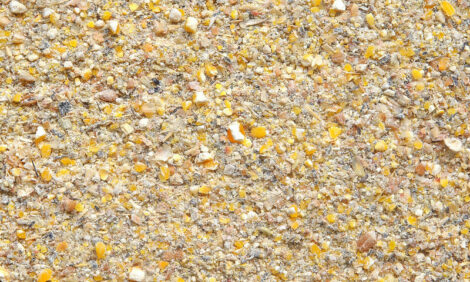



Climate Change Study: More Land, Fewer Harvests
GLOBAL - Most of the Earth’s agricultural land resources are already under cultivation. Climate change poses a huge challenge to global agriculture, but a new study by geographers at the Ludwig Maximilian University in Munich, Germany, shows that some regions could benefit from it.According to a simulation of the impact of climate change on agricultural production over the course of the 21st century, carried out by researchers led by Professor Wolfram Mauser at LMU’s Department of Geography, some two-thirds of all land potentially suitable for agricultural use is already under cultivation.
The study indicates that climate change will expand the supply of cropland in the high latitudes of the Northern hemisphere (Canada, Russia, China) over the next 100 years.
However, in the absence of adaptation measures such as increased irrigation, the simulation projects a significant loss of suitable agricultural land in Mediterranean regions and in parts of Sub-Saharan Africa. The results of the study appear in the online journal, PLOS ONE.
Ecological factors such as climate, soil quality, water supply and topography determine the suitability of land for agriculture. In the new study the LMU team focused on the probable impact of climate change on the supply of land suitable for the cultivation of the 16 major food and energy crops worldwide, including staples such as maize, rice, soybeans and wheat.
“Based on the environmental requirements for growth of these plants, in terms of climate, soil and terrain, one can determine whether or not a given location on Earth provides conditions required by specific crops,” said Dr Florian Zabel, one of the authors of the new study.
The results show that, if one includes areas, such as the Nile Valley, which are already dependent on irrigation today, some 80 million square kilometres of the Earth’s land surface is potentially suitable for agricultural use.
This figure is equivalent to about half the total land surface of the Earth.
However, approximately one-third of this land is currently designated as protected or consists of densely forested areas.
If one assumes that these areas retain their status, this reduces the size of the pool of land suitable for agricultural use to some 54 million square kilometres – and of this, 91 per cent is already under cultivation.

While new cropland is predicted to become available in the Northern hemisphere(green), conditions are expected to deteriorate in other areas, including the Mediterranean region (brown).
(Source: Dr Florian Zabel, LMU)
Limits to Expansion of Cropland
“In the context of current projections, which predict that the demand for food will double by the year 2050 as the result of population increase, our results are quite alarming. In addition, one must consider the prospect of increased pressure on land resources for the cultivation of forage crops and animal feed owing to rising demand for meat, and the expansion of land use for the production of bioenergy,” said Dr Zabel.
One obvious way to expand the pool of land available for agricultural production would be to convert existing forest areas into cropland
“This approach has been increasingly adopted over the past several decades in countries such as Brazil and Indonesia. The problem is such forest areas provide crucial ecosystem services which, among other things, help to regulate climate. Loss of these sources of natural regulation could make whole regions infertile,” said Professor Wolfram Mauser.
For this reason, alternatives to this form of expansion of farming land will have to be developed and at the same time the necessary global increase in agricultural production needs to be achieved.
“And this will require a detailed understanding of the agricultural potential at every point on the land surface.”
In helping to provide such knowledge, the LMU team hopes to create a basis for the optimal allocation of land resources while protecting and preserving crucial ecosystems. This would enable agricultural efficiency to be sustainably increased, while minimizing the accompanying social and environmental costs.
As input for their simulation study, the LMU scientists used data obtained with the global climate model ECHAM5. This model makes it possible to predict the climatic effects of various scenarios and rates of increase of carbon dioxide emissions.
The researchers chose the projections of one particular scenario (A1B), which leads to an increase of land suitable for agriculture by five million square kilometres by the year 2100. “Much of the additional area is, however, at best only moderately suited to agricultural use, so the proportion of highly fertile land used for crop production will decrease,” said Dr Zabel.
Moreover, in the tropical regions of Brazil, Asia and Central Africa, climate change will significantly reduce the chance of obtaining multiple harvests per year.
The LMU team carried out the simulation as part of a nationwide research project devoted to the “Global Assessment of Land Use Dynamics, Greenhouse Gas Emissions and Ecosystems Services”, which focuses on aspects of sustainable land management, and is financially supported by the Federal Ministry for Education and Research.








